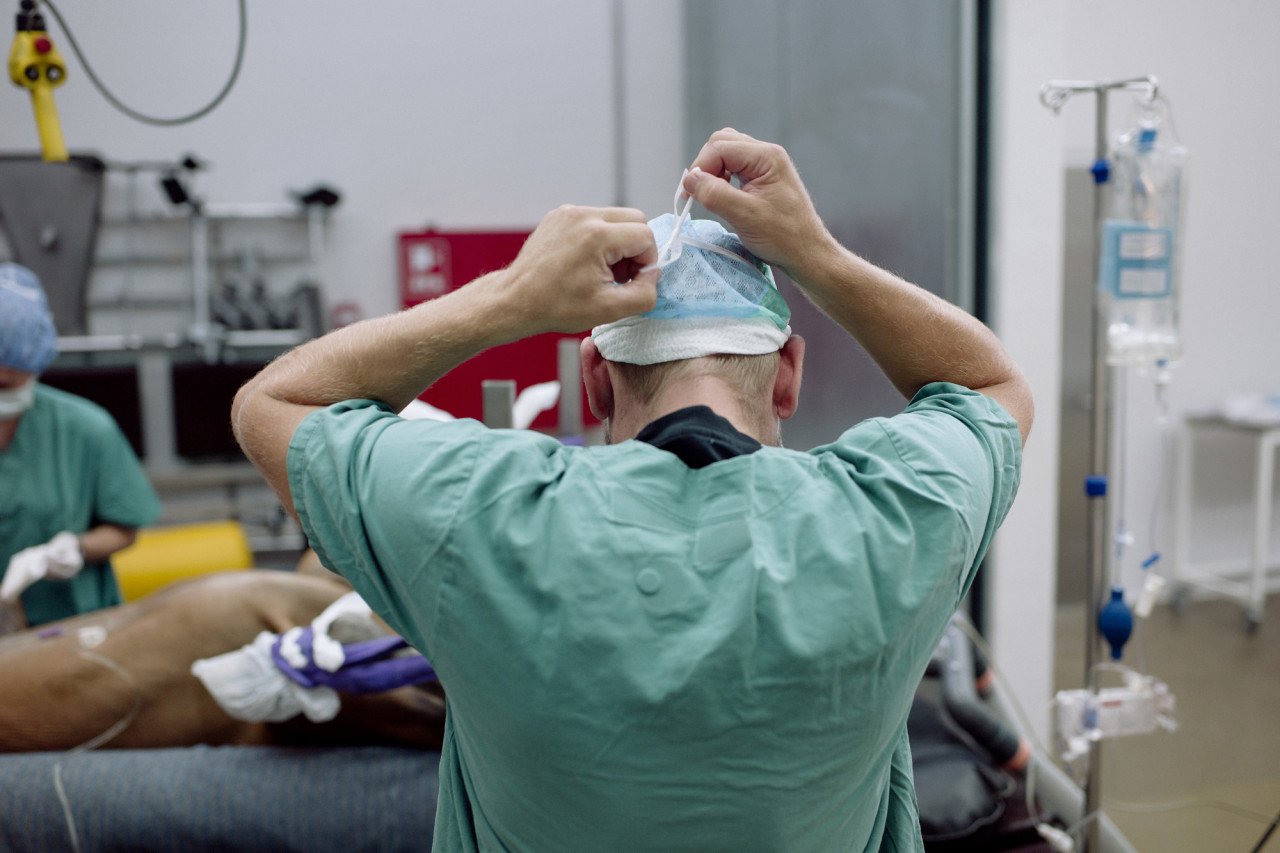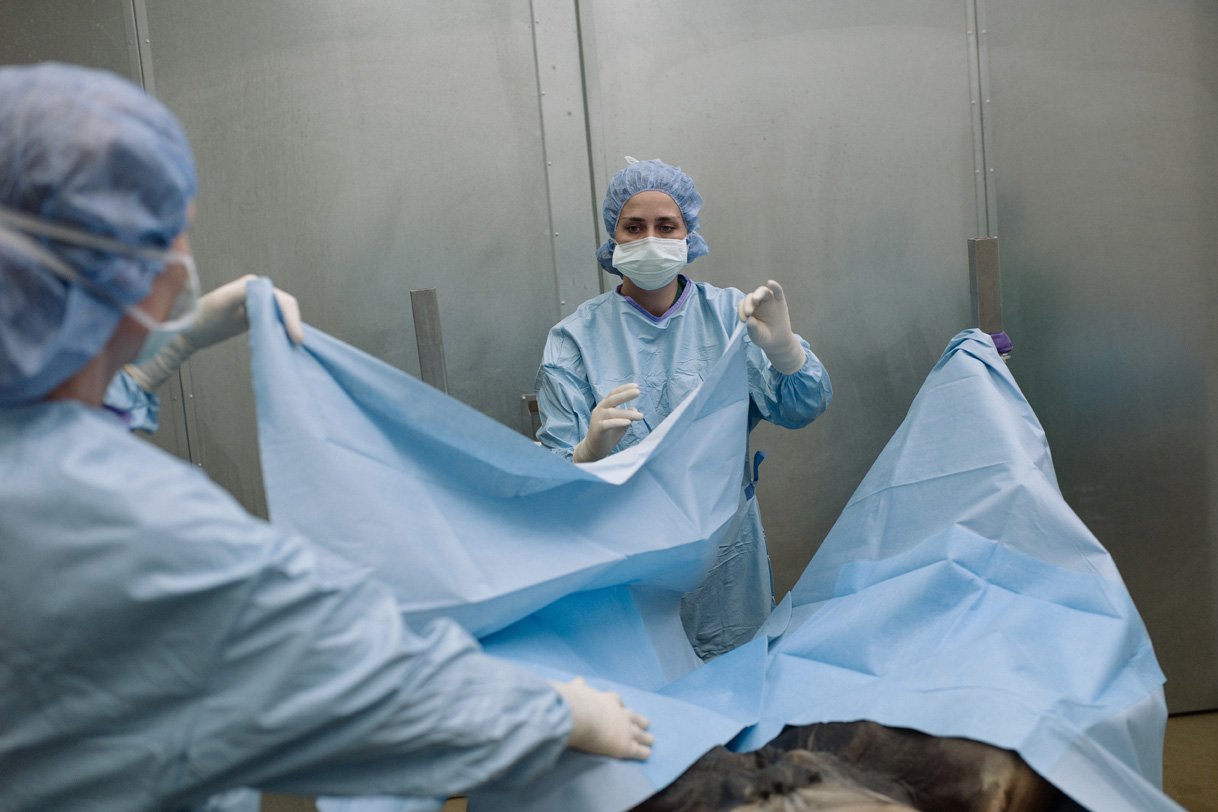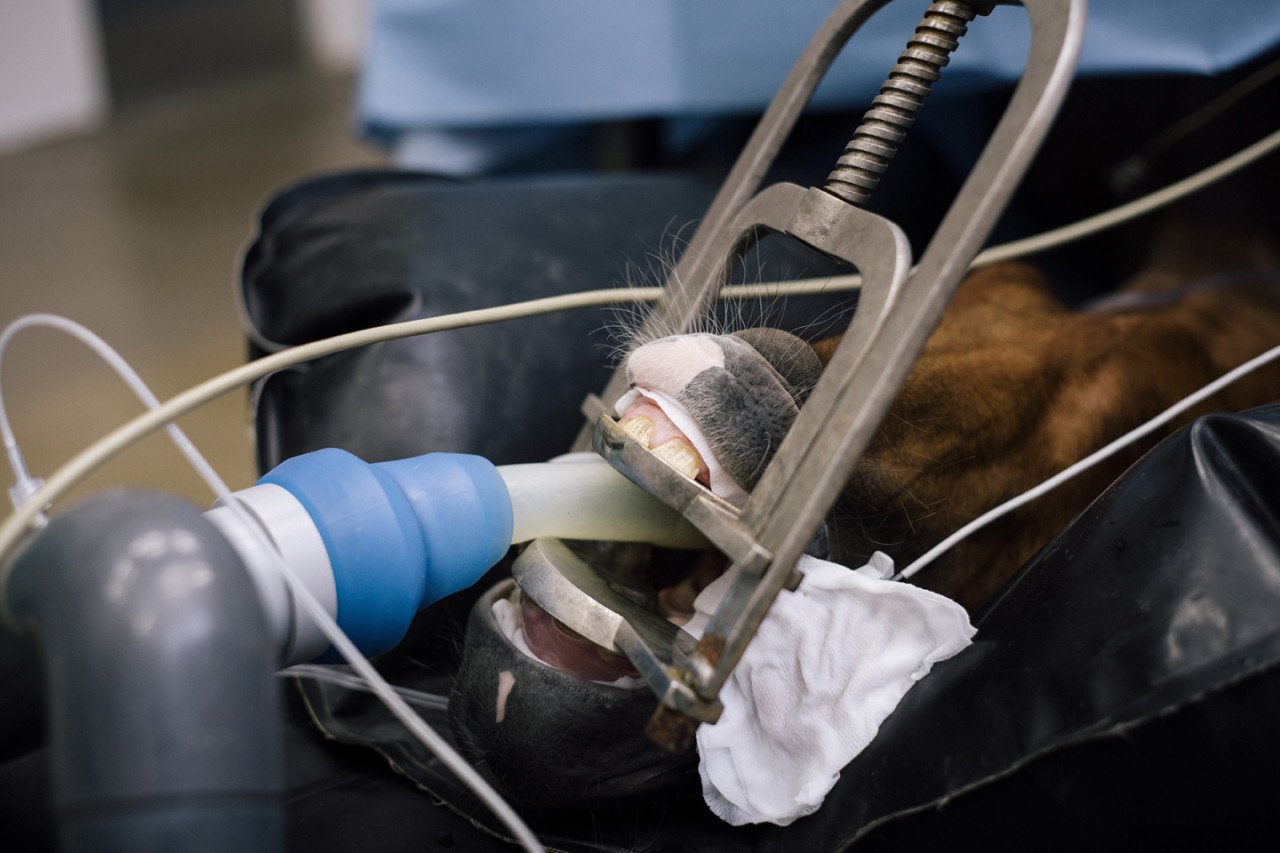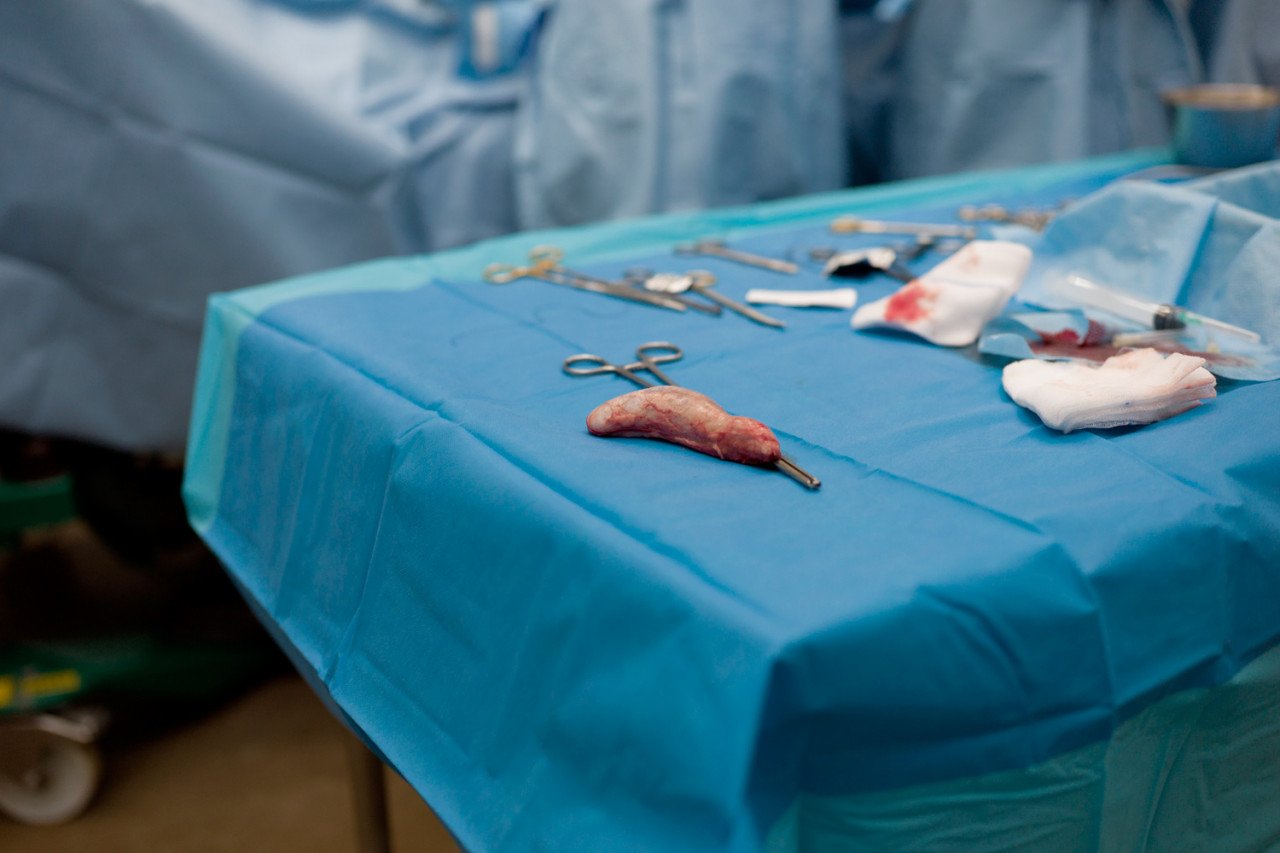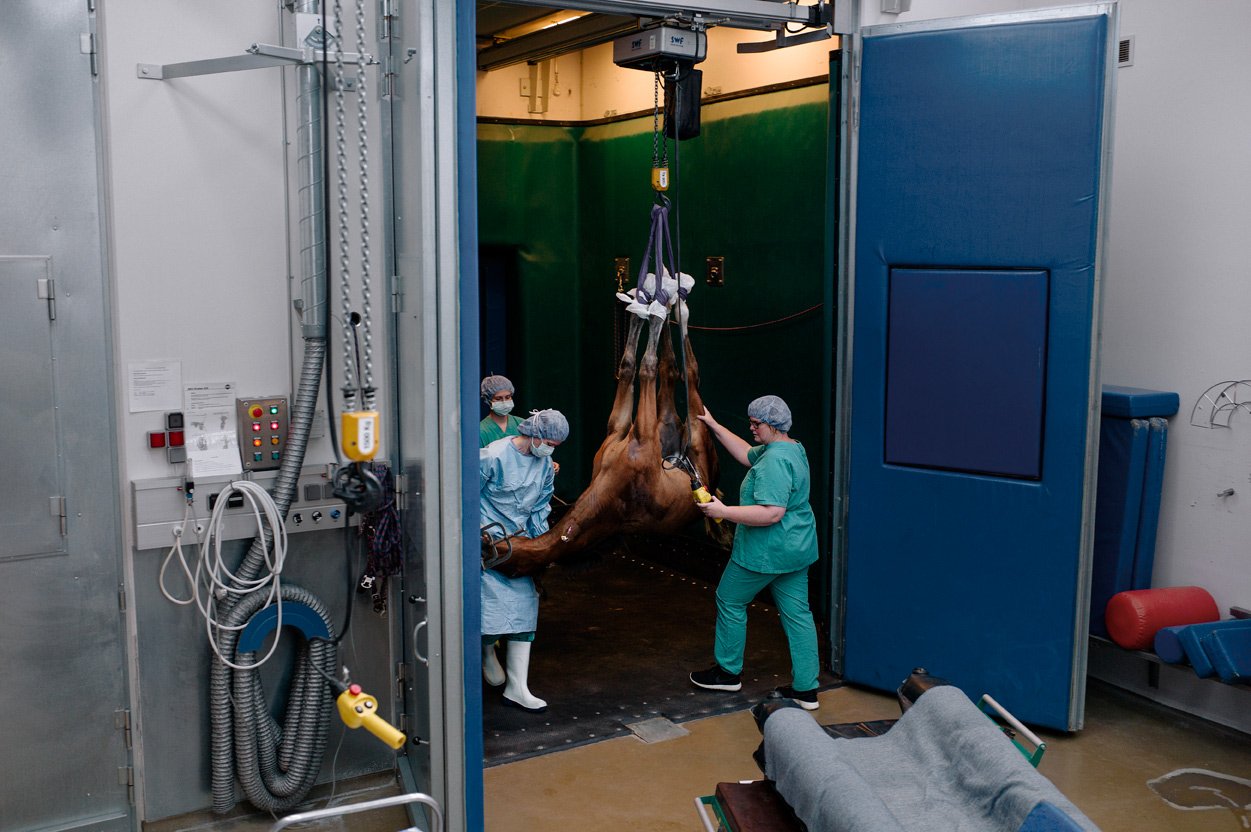Universitetsavisen
Nørregade 10
1165 København K
Tlf: 35 32 28 98 (mon-thurs)
E-mail: uni-avis@adm.ku.dk
—
Science
Photo essay — It’s 9:56 am, and the first patient of the day is ready to be operated on. He’s three months old, weighs 190 kilos and is fully anesthetized. The five-person operation team is ready, too. For three of them, the surgery is part of their education.
At the Large Animal Teaching Hospital in Taastrup, in Copenhagen’s outskirts, the day begins with doctors making their morning rounds. After the staff veterinarians and the veterinary students have checked in on all the patients in the hospital stable (primarily horses, but also a few cows, a sheep that’s looking poorly and a goat that’s eaten something that doesn’t agree with it) it’s time for the day’s first operation: a three-month old foal suffering from an inguinal hernia, and who is also due to be castrated.


